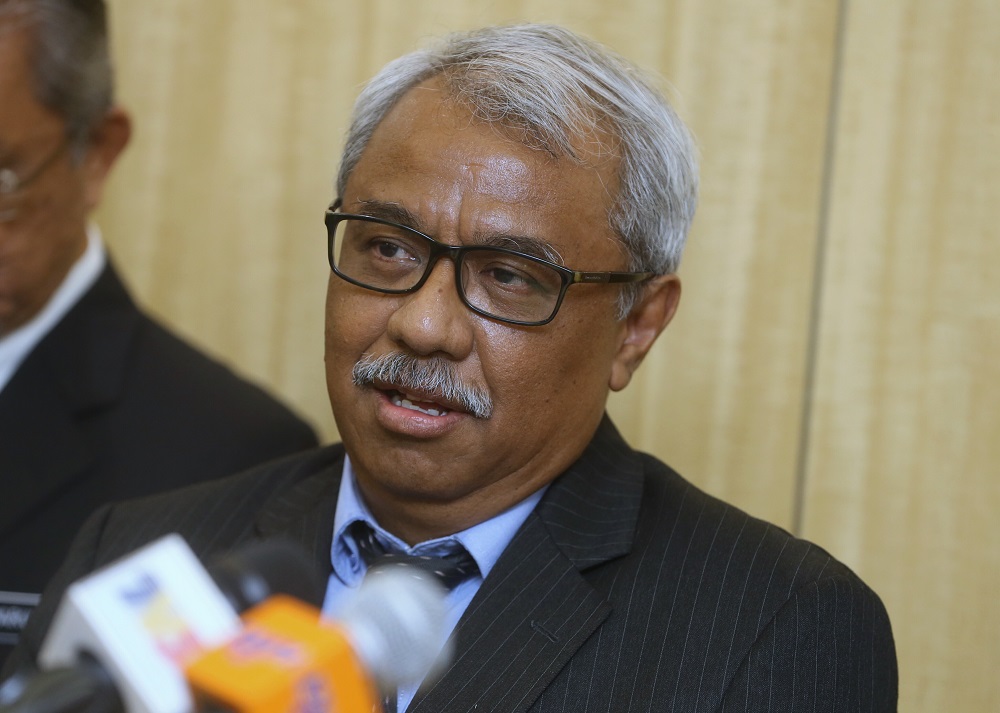KUALA LUMPUR, May 1 ― The country's aviation industry can progress to become comparable to either Singapore or Dubai, but it is hampered by the single airport operator system that makes Malaysia lose out in terms of attracting more airlines.
Advocating that view, Malaysian Aviation Commission (Mavcom) executive chairman Dr Nungsari Ahmad Radhi explained that Singapore, for instance, has a strong domestic demand that is sufficient to support the airport business, which further catalyses its development as an aviation centre.
“Meanwhile, Dubai’s aviation sector is based on its role as a transit hub, which relies on connectivity and its airports’ interlining capabilities rather than domestic demand,” he said.
Malaysia has a combination of both the Singapore and Dubai spectrums, whereby it can excel or be competitive with other international airports, he told Bernama in an interview.
The country could be like Dubai, but only if the domestic airports were providing better services and facilities especially in catering to transit passengers, Nungsari said.
“We need to focus on improving our airport in terms of services and efficiency. Or if we aim to be more like Singapore, we have a bigger task at hand, which is developing the economy to grow at a more aggressive pace, so that it can provide the necessary domestic demand for the aviation sector,” he explained.
However, the prickly point here is that the current single operator system, which means that there is no competition, making the sector lull and unattractive, he said.
“Malaysian airports, especially our gateway hubs, do not operate 24 hours a day, which may be a reflection of the fact that airlines don’t find them attractive. This, in turn, implies that competition may be an issue,” Nungsari said.
Currently, he said, 80 per cent of the airlines that are coming are of Mumbai (India) and Beijing (China) distance range.
“Another reason that our airports are only operating in a limited time is because we don’t receive passengers from longer distances, for instance from North America. Hence, airports are underutilised,” he said.
Recently, Malaysia Airports Holdings Bhd (MAHB) received approval for a 35-year extension on operating agreements (OAs) until February 11, 2069. The extension means replacing the airport operator’s previous two OAs signed on February 12, 2009, with four new OAs ― for the Kuala Lumpur International Airport, Sarawak airports, Sabah airports, and designated airports in Peninsular Malaysia.
To be clear, the Malaysian government is the asset owner of almost all commercial airports in the country and is the beneficial owner of the land title, and following the OA extension, MAHB will continue to serve as operator of 39 airports nationwide until 2069.
However, the idea of having multiple airport operators in the country is not new, as AirAsia Group chief executive officer Tan Sri Tony Fernandes has persistently voiced out his opinion on the matter.
To recap, Transport Minister Anthony Loke Siew Fook said the OA extension was to reduce government's financial burden and it would provide freedom for MAHB to engage with investors especially in developing infrastructure and facilities.
The new OAs, which are scheduled to be finalised in June, are expected to provide some space for MAHB in planning investment for the airport, whereas under the previous OAs, the capital expenditure for expansion was borne by the government.
Going forward, Nungsari believes that there needs to be a master plan or framework that provides clear direction and long-term view of airports in Malaysia, perhaps for the next 30 years.
“We can't just decide to build a new airport without taking into account its connectivity to other means of transportation, including land transport,” he said.
He revealed that Mavcom is working closely with the Ministry of Transport on a long-term plan for the sector, which will take into consideration multimodal connectivity, capacity or even expansion plans.
“We need to optimise the spending as we currently invest a lot on land transport, especially rail in Peninsular Malaysia. We can optimise the spending by improving the connectivity.”
With the growing regional passenger traffic growth, Nungsari said, it is crucial to decide on the airport development model, as it would ultimately dictate which airports should be expanded or relocated and how investments are aligned for that purpose.
He also foresees regulations to be implemented to assure a certain level of service provided at the airports as well as fair and equal treatment for all airlines, as these factors have been proven to attract global airlines to neighbouring countries' airports.
On passenger service charge (PSC), he said Mavcom believes that PSC rates should be determined by facilities available in an airport as well as reflect the attractiveness to the investors.
“Mavcom sets it (the PSC) and we want to differentiate the PSC between airports, but we need to find the basis for doing that in the most objective manner and based on this, we have done valuation based on airport regulated assets.
“The regulated asset assessment means differentiating the PSC based on airport type as well as the quality, but it would ultimately determine the airport funding model, which means if there is any plan to build new airport or expanding old ones, who's going to pay for it,” he explained.
He reiterated that an airport expansion plan without using government money is possible; however, investors would demand clarity on the percentage of charges allowed to be collected since the amount of money invested in an airport is a large sum.
“Their earnings is PSC and PSC determines the viability of airport funding. If private investors show some interest to come in, they need to know how much they can get and will the government change it. We (should ensure that we are) being fair to investors.” ― Bernama



















